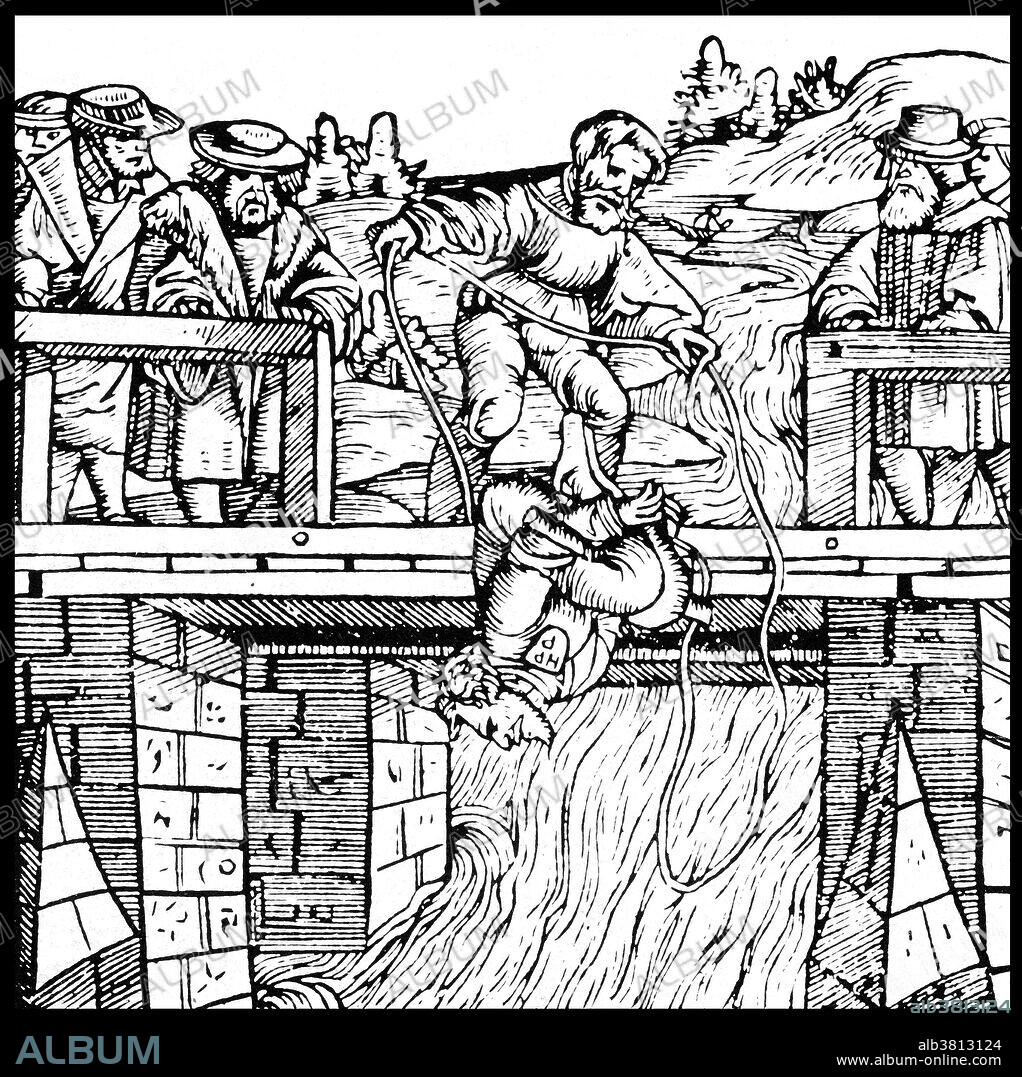alb3813124
Medieval Execution by Drowning, 16th Century

|
Añadir a otro lightbox |
|
Añadir a otro lightbox |



¿Ya tienes cuenta? Iniciar sesión
¿No tienes cuenta? Regístrate
Compra esta imagen

Título:
Medieval Execution by Drowning, 16th Century
Descripción:
Traducción automática: Las víctimas se ahogaron en ríos, lagos y estanques de aldeas, en jabones y barriles, e incluso en cuencos y cacerolas. A veces él o ella estaba atado en un saco con una docena de gatos. El juicio por ordalías era una antigua práctica judicial mediante la cual se determinaba la culpabilidad o inocencia de los acusados sometiéndolos a una experiencia dolorosa, o al menos desagradable, por lo general peligrosa. La prueba era de vida o muerte y la prueba de la inocencia era la supervivencia. En algunos casos, el acusado se consideraba inocente si escapaba de las heridas o si sus heridas sanaban. Durante la Edad Media, se leía una sentencia de muerte con las palabras "cum fossa et furca" (con fosa y horca). El ahogamiento sobrevivió como método de ejecución en Europa hasta los siglos XVII y XVIII. Inglaterra había abolido la práctica en 1623, Escocia en 1685, Suiza en 1652, Austria en 1776, Islandia en 1777 y Rusia a principios del siglo XIX. Madera alemana pero de origen desconocido, principios del siglo XVI.
Victims were drowned in rivers, lakes and village pons, in boast and barrels, and even in bowls and saucepans. Sometimes he or she was tied up in a sack with a dozen cats. Trial by ordeal was an ancient judicial practice by which the guilt or innocence of the accused was determined by subjecting them to a painful, or at least an unpleasant, usually dangerous experience. The test was one of life or death and the proof of innocence was survival. In some cases, the accused was considered innocent if they escaped injury or if their injuries healed. During the Middle Ages, a sentence of death was read using the words "cum fossa et furca" (with pit and gallows). Drowning survived as a method of execution in Europe until the 17th and 18th centuries. England had abolished the practice by 1623, Scotland by 1685, Switzerland in 1652, Austria in 1776, Iceland in 1777, and Russia by the beginning of the 1800s. German wood but from an unknown source, early 1500s.
Crédito:
Album / NYPL/Science Source
Autorizaciones:
Modelo: No - Propiedad: No
¿Preguntas relacionadas con los derechos?
¿Preguntas relacionadas con los derechos?
Tamaño imagen:
3750 x 3756 px | 40.3 MB
Tamaño impresión:
31.8 x 31.8 cm | 12.5 x 12.5 in (300 dpi)
Palabras clave:
ALEMAN • ALEMANA • ARTE • CASTIGAR • CASTIGO • CRUEL • CRUELDAD • DIBUJO • EJECUCION • ESPECTADOR • GENTE • GRABADO EN MADERA • HISTORIA • HISTORICO • HOMBRES • ILUSTRACION • MEDIEVAL • METODO TORTURA • OBRA DE ARTE • ORDENAMIENTO JURÍDICO • PENA CAPITAL • PERSECUCION • PLANCHA DE MADERA • S. XVI • SENTENCIA DE MUERTE • SIGLO XVI • VERDUGO • VICTIMA • XILOGRAFIA
 Pinterest
Pinterest Twitter
Twitter Facebook
Facebook Copiar enlace
Copiar enlace Email
Email
